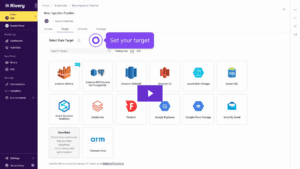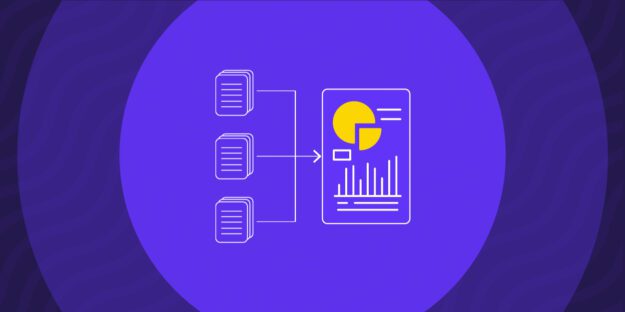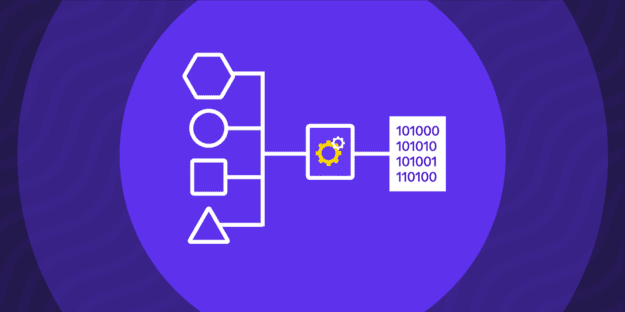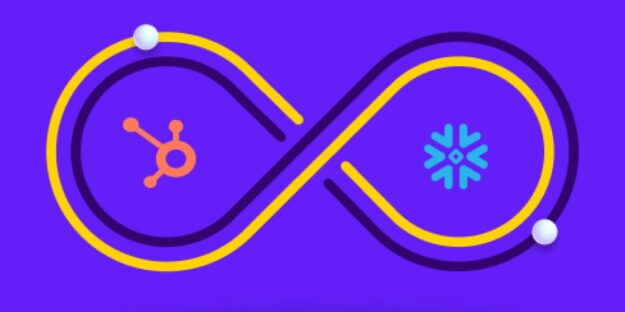Data is critical in the modern business world. You need data on customer preferences, sales performance, and market trends. You also require data on employee productivity, workflow management, and financial metrics. These are vital for successful operations.
That said, without reliable and actionable data, your business will struggle to grow and make the right decisions.
Research suggests data will grow from 33 ZB (zettabytes) in 2018 to 175 ZB by 2025. With such growing data demands, your organization must orchestrate its data to make it accessible and reliable.
In this article, we will break down data orchestration and show you why it’s so fundamental for your business:
What Is Data Orchestration?
Data orchestration is an automated process that combines and organizes siloed data from various data storage locations, making it available for analysis.
It can connect multiple data centers, including legacy systems, cloud-based tools, and data lakes, into a unified, accessible platform.
The main purpose of data orchestration is to allow data analysis tools to filter, sort, organize, and publish complex data within a data-storing cloud. Actions like monitoring, composing, and lining up data pipelines using data from different sources are what data management solutions offer.
The process of data orchestration involves three key steps:
1. Organizing Data: Aggregating data from diverse sources like social media, CRM systems, and behavioral data.
2. Transforming Data: Converting data into a standardized format suitable for analysis.
3. Data Activation: Making data readily available for analysis tools to extract actionable insights.
How Does Data Orchestration Work?
Data orchestration is a systematic approach to managing and optimizing data flows across different sources and destinations, ensuring the correct data is available at the right time.
Here are the 6 main functions of data orchestration:
- Data Collection: Data orchestration gathers data from diverse and critical sources, including databases, cloud storage, and APIs.
- Integration: Data orchestration will combine and standardize data formats for unified processing, keeping your data clean and reliable.
- Cleansing and Transformation: Data orchestration will clean and transform your data to ensure accuracy and consistency.
- Workflow Automation: Data orchestration will also automate processes for efficiency and reduce manual errors, two critical aspects for successful operations.
- Storage and Access: Proper data orchestration will store data securely and provide access through APIs and interfaces.
- Monitoring and Governance: Data orchestration is also fantastic for continuously monitoring data flows and enforcing security and compliance standards.
With the combination of these advantages, data orchestration can be critical for your company.
What Is The Importance Of Data Orchestration?
Data comes from diverse sources like databases, cloud storage, and APIs. Unfortunately, the data is typically ineffective in its raw format, leaving companies with limited data insights.
However, that’s where data orchestration can benefit your business.
For example, it improves data integration and quality, enhances operational efficiency and scalability, and enables real-time processing. It also ensures better decision-making, higher data security, stricter compliance, and robust governance.
Why Enterprises Need Data Orchestration
First and foremost, data orchestration allows businesses to computerize and facilitate decisions based on data analysis. It will connect the business’s storage outlets into a single pool so that data analysis tools can easily access and analyze heaps of data whenever needed.
Enterprises that practice intricate data management have uninterrupted access to both existing and incoming data, making it easier for data analysis tools to process information faster. Big data orchestration makes decision-making more efficient and accurate.
Benefits of Data Orchestration
As mundane as it sounds, data orchestration can boost the efficiency levels of your organization. Yet, there are more layers to the advantages of this part of data management, like reducing costs, being compliant with data privacy laws, and more. Here are the 3 main benefits of data orchestration.
1. Reduced Costs
Cost reduction is the most appealing trait of data orchestration. Naturally, all companies aim to minimize their costs while expanding their profits. To do that, companies need to harvest substantial amounts of data from different outlets, which is not an easy task.
The IT experts within your company can lose hours extracting, organizing, and categorizing data for data analysis tools to process the information. Other than being a strenuous task, if done manually, it can cause large error margins, which is why companies prefer to stay on the safe side and practice data management.
Besides shrinking the window for errors, data management will ultimately help your business reduce the compensation bill. Moreover, you won’t have to hire more staff to perform data analysis – the software will carry out the task.
2. Eliminated Data Bottlenecks
Data bottlenecks are the stumbling blocks preventing data flow from coursing through filters and rendering accurate information. Mainly, bottlenecks appear as the result of mishandled data or lack of data-handling capacities, especially in heavy data traffic.
Using data orchestration enables your business to automate the data sorting process while also prepping and organizing data. This leads to less time spent on data harvesting and preparation.
3. Ensured Data Governance
Adhering to data governance standards is an important practice for enterprises, which is another point where data orchestration helps. Data management refers to the process of regulating the data used in corporate organizations by using standards and policies.
If your data comes from several different outlets, keeping data flow in check and monitoring the proper processing of data becomes challenging. Now, by using data orchestration tools, your company’s governance plan can easily connect all outlets while simultaneously complying with your data-processing strategy.
3 Common Data Orchestration Challenges
Data orchestration is a highly effective way to improve your data management, but that doesn’t mean it’s always effective. There are 3 significant challenges:
1. Ensuring Data Quality
Maintaining data quality is critical for sufficient data orchestration. Inaccurate or incomplete data can cause bad insights and decisions, which damages business operations.
Robust cleansing, validation, and monitoring processes can ensure data accuracy. However, this involves identifying and rectifying errors, removing duplicates, and standardizing formats to satisfy quality standards.
Also, continuous monitoring and governance are essential to upholding data integrity over time.
2. Overcoming Data Silos
Data silos arise when departments, systems, or applications isolate data. These silos cause duplication of efforts, inconsistency in reporting, and missed opportunities for data insights.
That said, overcoming data silos involves breaking down barriers through integration, standardization, and data governance initiatives.
This means implementing centralized data repositories, establishing data-sharing protocols, and promoting a culture of collaboration across the organization.
3. Handling Integration Complexities
Integrating data from diverse sources with different formats, structures, and protocols can be complicated. For example, challenges arise due to incompatible systems, data migration issues, or conflicting data models.
As a result, you should invest in scalable integration solutions to support interoperability and flexibility. This process involves choosing appropriate integration tools, defining clear data integration strategies, and ensuring compatibility with existing infrastructure.
Challenges/Limitations of Cloud Data Warehouse
Storing your enterprise’s data in a cloud warehouse is more than essential for the success of your business. Namely, the warehouse is the main depository for external and internal corporate data sources.
The main use of a data warehouse is to back strategic business decisions by providing data analysis. However, there are a few limitations to using data warehouses, like:
- Non-unified cost scheme;
- Lack of skill options;
- Extended cloud security and governance;
- Movement of data;
- Missing standardization.
Data Orchestration Tools/Platforms
Tools or data orchestration platforms for data management allow businesses to automate their data-driven processes. Strategic and targeted audience decision-making are some of the crucial actions a business can take to accelerate revenue or reach a broader audience.
By using data orchestration tools or platforms, all of your data will be harvested, categorized, merged, when and if needed, and prepared for analysis. Moreover, data orchestration platforms are suitable for machine learning, too.
Here you can find out more details about how data orchestration tools work as well as the top 15 data orchestration tools for your business needs.
Data Orchestration Process/Framework
The term orchestration framework (OF) refers to a tool that computerizes the data orchestration process. Nowadays, many artificial intelligence programs use data orchestration to deliver clean data.
A configurable framework governed by business rules, the orchestration framework is used to determine the business scenarios in question. It also automates logistics processes and unifies data integration.
Data Orchestration vs. Data Visualization
Data visualization refers to the process of visually presenting information using graphics, highlighting schemes, and following data trends. All of the actions help the user gain insight at a faster pace.
Rather than opposing data orchestration, data visualization can help data analysis tools understand different data patterns. Ultimately, such actions will make the data analysis process easier.
Data Orchestration vs. ETL
Data orchestration has more data integration capabilities than ETL. Although ETL focuses on batch processing and consolidation of structured data, data orchestration can handle batch and real-time integration of structured and unstructured data.
Data orchestration also has a broad approach to managing and optimizing data workflows. Unlike traditional ETL processes—which focus on batch processing and transforming structured data—data orchestration involves orchestrating the entire data pipeline. This includes data ingestion, transformation, validation, and delivery.
Furthermore, data orchestrations enable businesses to integrate data from many sources, such as databases, cloud services, APIs, and streaming platforms, in real-time or batch mode.
Additionally, data orchestration often involves automation and workflow management tools to streamline and optimize data processes; this makes them more adaptable to dynamic data environments and growing business needs.
Data Orchestration vs. Data Pipeline
Data pipelines transport large data volumes from one source to another, ensuring a seamless flow of information across systems.
Once the data has traveled through data pipelines, data management works by extracting useful insights from the raw data and preparing it for the next stage.
After that, data orchestration tools organize and segment the prepared data for efficient processing and analysis. This phase involves cleansing, transforming, and enriching the raw data to make it valuable.
Together, these stages ensure data moves smoothly from collection to actionable insights, which is essential for your business.
Data Orchestration vs Data Automation
Data orchestration and data automation have different functions within the data processing ecosystem.
For example, data orchestration manages the complex workflows and dependencies required to move and process data through various stages and systems. As a result, this ensures tasks are executed in the correct order and at the right time.
In contrast, data automation streamlines individual tasks within this workflow, automating repetitive and manual processes such as data extraction, transformation, and loading.
Together, orchestration ensures smooth and efficient data flow across the entire pipeline, whereas automation enhances efficiency by handling specific tasks more quickly and reliably.
Case Studies
WalkMe
WalkMe™ is a digital adoption platform that uses AI to guide users through online tasks, helping 2,000 companies globally and impacting 35M employees.
To streamline data management, they incorporated various sources into Amazon Redshift and Tableau via Rivery. This consolidation allowed them to gain total control over their data, leading to enhanced business insights previously inaccessible due to siloed systems.
With swift integration and accessibility for all 900+ employees, WalkMe™ now enjoys real-time data access and empowers informed decision-making across the organization.
Here you can read the full WalkMe Data Orchestration Case Study.
Howard Hughes
Howard Hughes, a real estate community builder, transformed their data infrastructure with Rivery, replacing a complex stack with significant efficiency gains and cost savings. They reduced ETL time to under 40 minutes, integrated new data sources, and implemented historical snapshots, all managed by a lean data team of two
This streamlined approach saved $300K in data engineering costs, slashed Snowflake consumption expenses by 83%, and enabled automated forecasts and financial processes.
Here you can read the entire Howard Hughes Data Orchestration Case Study.
Conclusion
Practicing data orchestration for your enterprise can be the most cost-efficient business transaction you make. Furthermore, it helps you make more accurate and result-driven business decisions.
Managing and orchestrating your data can be complex and can really hinder your work if not done right. If you want to stop working for your data and make it work for you, reach out to Rivery and let’s see how we can solve your data issues.
FAQs
Orchestration in IT refers to the process of harvesting real-time data from multiple data sources and integrating them into a single pool for easy access and management of collected data.
Data pipeline orchestration means moving and combining different data from multiple sources to prepare data for analysis and reach the end-user stage.
ETL stands for Extract, Transform, and Load data, so an ETL orchestration is a mechanism that constructs large data pipelines.
Basically, cloud orchestration is an approach in data analysis that automates the tasks incorporated into managing the connections and operations of data workloads on internal and external clouds.
Automation refers to computerizing a sole process, or a minuscule number of corresponding tasks, whereas orchestration deals with managing several automated tasks.
An AWS (Amazon Web Services) orchestrator is assigned with the automation of management, coordination, and institutionalizing of elaborate computer systems, middleware, and services.
Orchestration of data is possible by using data orchestrating tools and platforms such as Apache Airflow, Metaflow, and others.
An orchestration service is possible to create by identifying the problem and the solution, identifying the data needed for orchestration, determining the rules for orchestration, specifying the cross-reference information for the orchestration, and identifying the service request for orchestration.
Container orchestration helps with the redistribution of a single application across various surroundings without needing to reassign the task.
Minimize the firefighting. Maximize ROI on pipelines.





